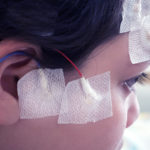Which children in status epilepticus are most at risk?

Status epilepticus, a prolonged, potentially life-threatening seizure, is epilepsy’s most severe manifestation. Patients known to have refractory status epilepticus are more likely to need ICU care if initial treatment is delayed. But what about the broader population of children who come to the emergency room in status epilepticus? Are there any early indicators to predict their care needs or, ideally, to prevent refractory status epilepticus?
An observational case-control study led by Tobias Loddenkemper, MD, director of Clinical Epilepsy Research at Boston Children’s Hospital, looked at nearly 600 episodes of status epilepticus that brought children to the ER across centers in North America. The cohort was drawn from the Pediatric Status Epilepticus Research Group (pSERG), founded at Boston Children’s more than a decade ago.
The study compared two groups:
- children whose seizures stopped after benzodiazepines or after a second-line anticonvulsant
- children with refractory status epilepticus, needing a third drug and/or ICU care to stop their seizures.
Somewhat surprisingly, the time between arrival in the ER and first- or second-line treatment was not the strongest predictor of whether a child’s seizure stopped. Instead, in a multivariate analysis, two significant predictors emerged: a family history of seizures and having a prescription for rectal diazepam. Both were associated with lower odds of having refractory status epilepticus.
Family preparation is important
Loddenkemper thinks these factors reflect that the family is more familiar with managing seizures and more prepared for emergencies by virtue of having a prescription for a rescue medication. Such children could potentially avoid unnecessary intravenous treatment, he says.
“These families and patients were trained and aware of what to do,” he says. “We’re not sure if this is because of greater health literacy or better management by their providers.”
However, having neither a family history nor a prescription for a rescue medication could indicate less overall seizure control and the need for early, intensive treatment to avoid a refractory seizure, says Loddenkemper.
The Epilepsy Center at Boston Children’s provides patients with a detailed epilepsy action plan to help avoid emergencies. The Center also works with insurance companies to make sure all families have access to rescue medications (either nasal or rectal), since these can be expensive.
“We want to prepare families and rescue children at risk for refractory status epilepticus as quickly as possible to prevent complications,” Loddenkemper says. “We’re learning that there’s more and more you can do to prevent prolonged seizures and keep children out of the ICU.”
The study was recently published in Neurology.
Refer a patient to the Epilepsy Center.
Related Posts :
-

A path forward for genetic testing in unexplained epilepsy
The number of genes implicated in epilepsy has grown rapidly in the past decade. This raises questions about what tests ...
-

Inspired by her daughter, one mom helps families navigate complex epilepsy
Colleen Gagnon felt something wasn’t right soon after her daughter Niamh was born but tried to convince herself she ...
-

A family’s search for answers and hope for PACS1 syndrome
Alya, 9, was about three weeks old when her mother, Taruna, noticed movements and behaviors she was concerned might be ...
-

Virtual visits give Weston time to grow and thrive
For many kids and parents, staying home during the COVID-19 pandemic was a challenge. But for Weston Mahady and his ...





